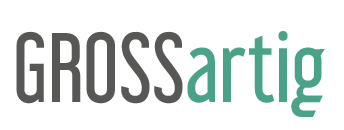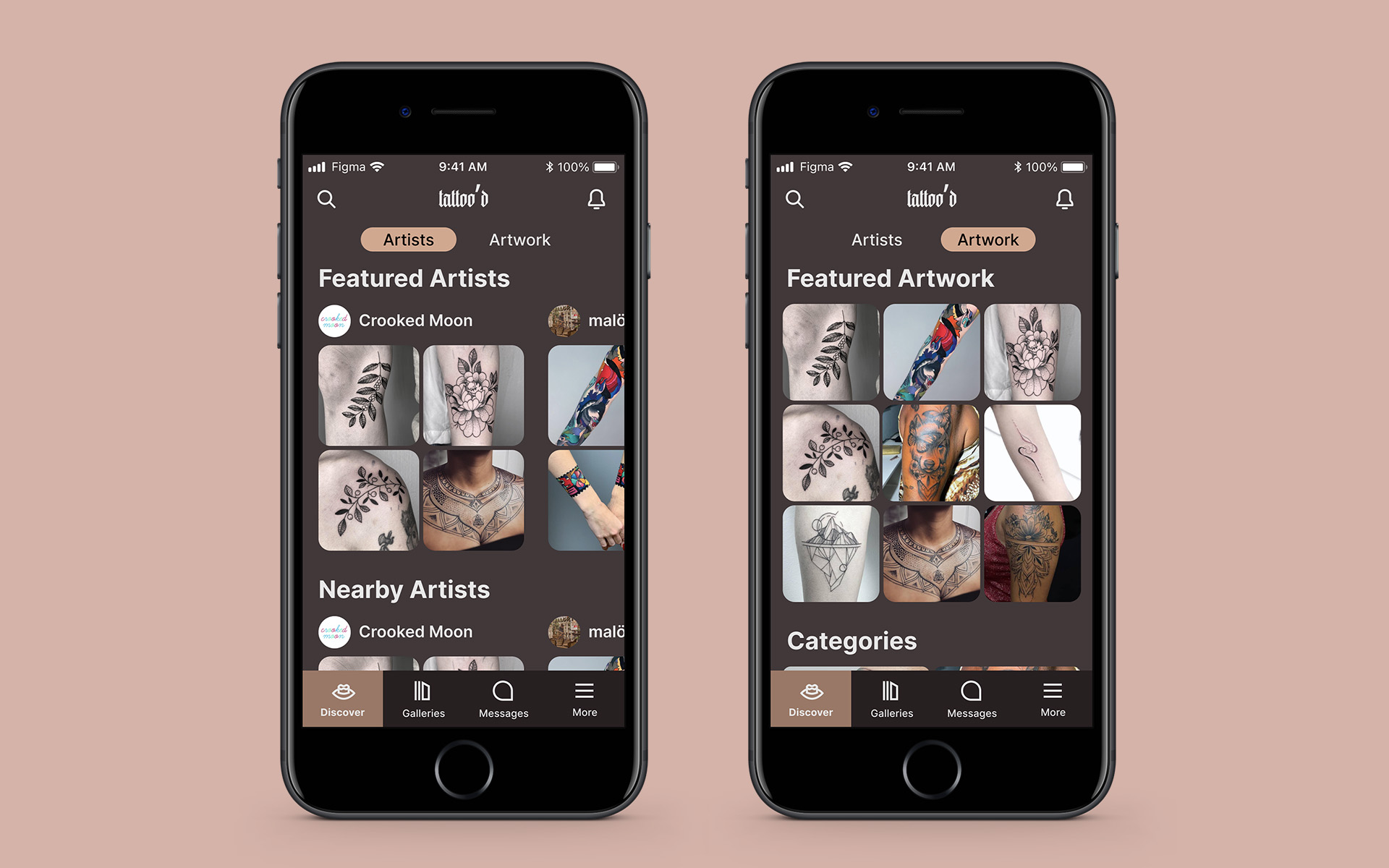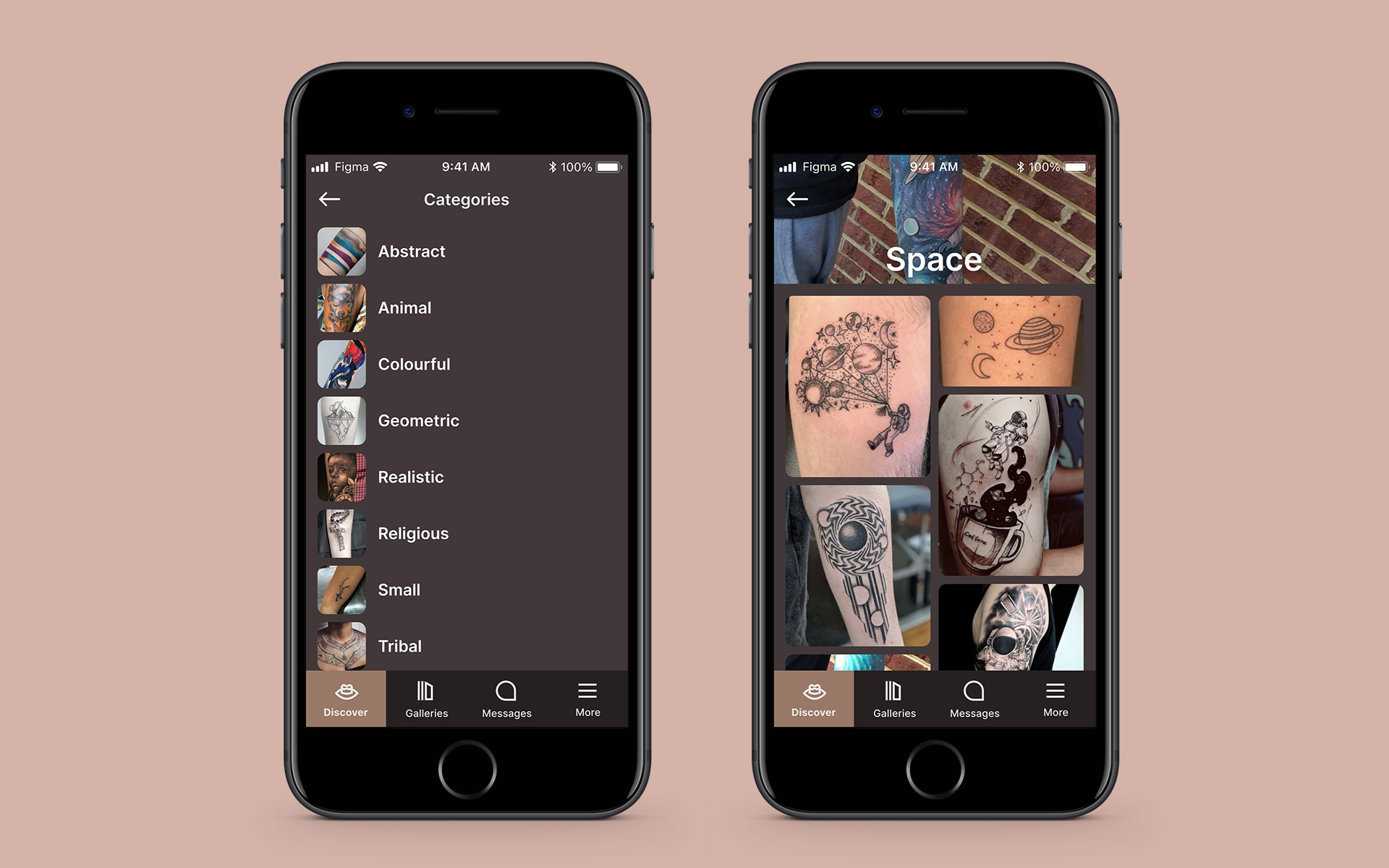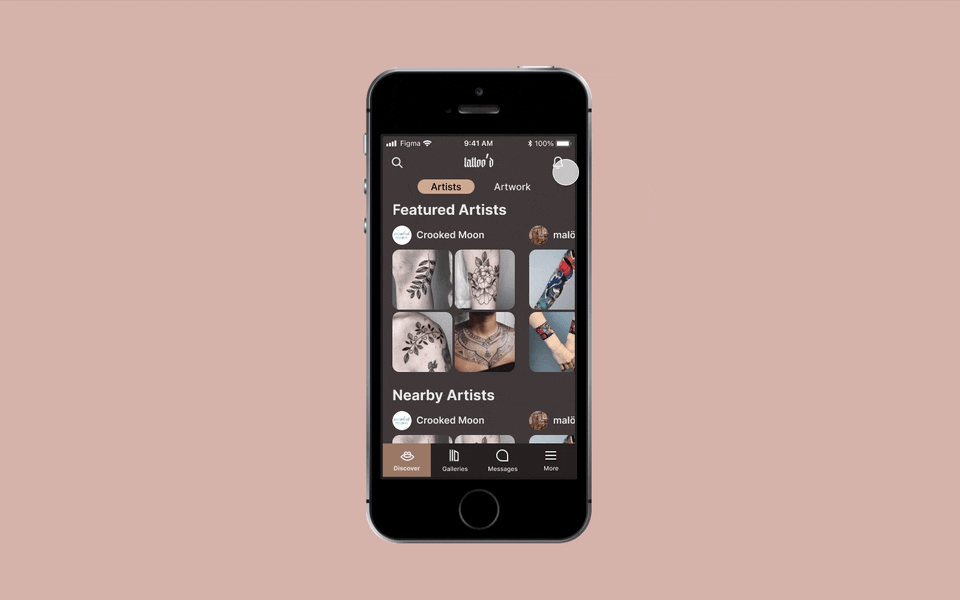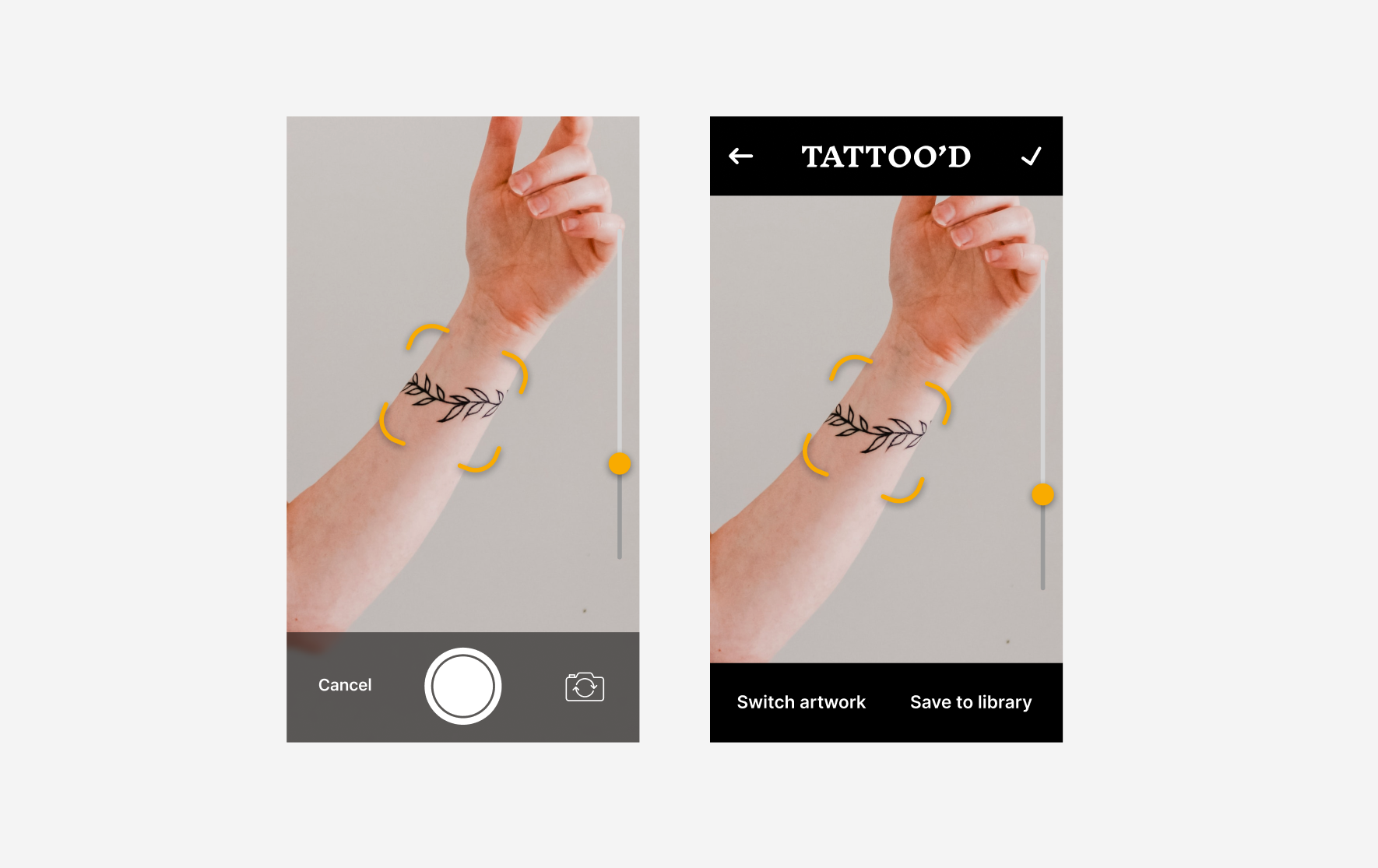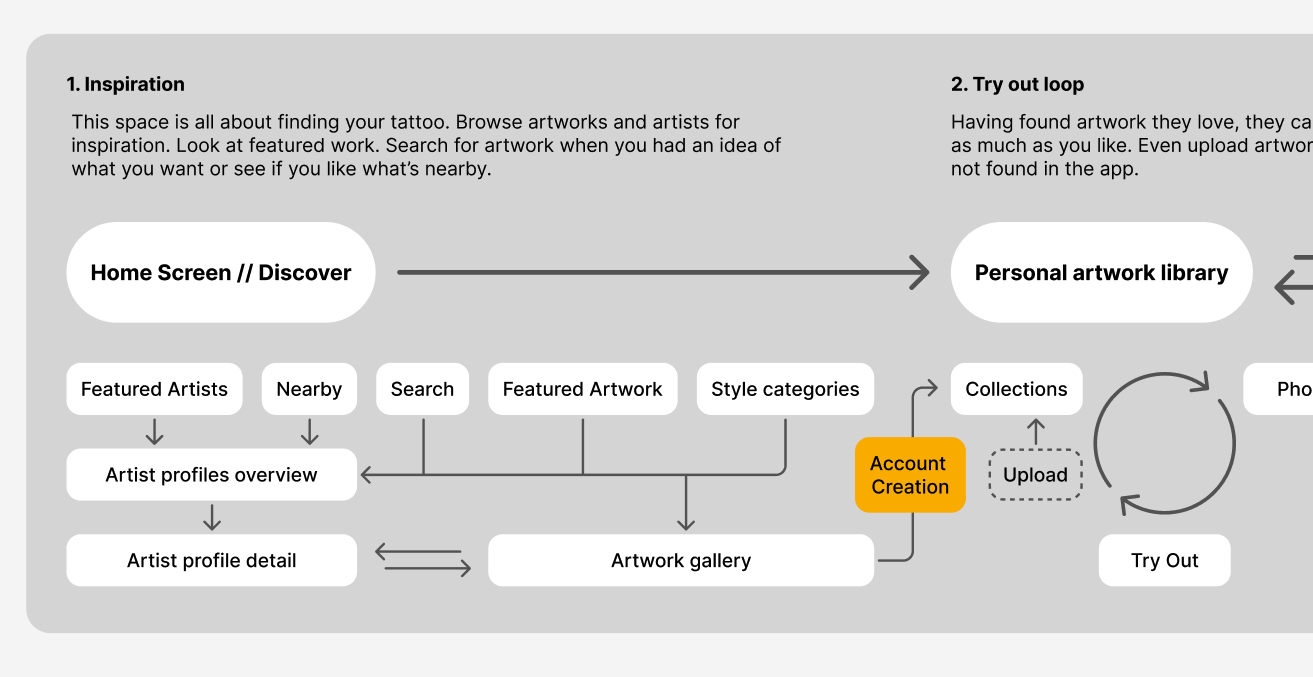TL;DR
- The project aimed to design an end-to-end flow for the tattooing process, from inspiration to completion.
- The solution consisted of an app with four main areas: finding artwork, trying out tattoos, booking appointments, and aftercare.
- The app allows users to curate artwork, try out tattoos on their body in AR or photos, communicate with artists, and purchase care products.
Concept
The tattoo’d project was part of my application to the Swedish consultancy tretton37.
As someone with an interest in tattoos and being tattooed myself I chose the following task:
”Seeing how it’s still difficult to change or remove tattoos once you’ve got them, it would be beneficial to have an ability to preview the results beforehand and thus make more informed decisions. Design an end-to-end flow covering the journey from a moment of inspiration to the completion of the tattoo.”
My Process
My overall process was as follows:
- Understand and reframe the problem.
- Explore the problem space by conducting research.
- Explore various designs, test them, and focus on the best solution.
- Present the chosen solution.
The problem reframed to a How might we-question became this:
How might we make it easier to commit to a lifetime of art on your body.
To research the problem space, I spoke to people who either have or are interested in tattoos. Additionally, I conducted some secondary research and discovered the following very generalized and oversimplified aspects:
- Tattoos are socially accepted as a form of art.
- Roughly one-third of humanity has at least one tattoo.
- The reputation of the tattoo studio or artist is the most crucial factor.
- Uncertainty about how it will look is still the number one factor in deciding not to get a tattoo.
To gather inspiration and research for my next tattoo, I explored existing services and solutions. These included other apps that curate artwork and provide visualization tools, as well as popular platforms such as Pinterest, Instagram, and the tattoo network coal. Additionally, I reviewed Flash books from tattoo artists.
Analyzing these resources helped me make informed decisions and assumptions for my own solution.
The Solution
I made a few assumptions for my design solution:
- Depth scans are saved in a file.
- No markers are needed.
- Artwork can be easily extracted from files or sketches are always available and included.
The app’s flow consists of four main areas.
Finding Artwork
The first is about finding artwork. Artwork can be curated in several different ways, including by artist, style, featured works, and nearby artists. Users can add the artworks they like to their own library to save them for later or jump into trying them out in an AR experience right away.
Try Out Loop
Users can create a collection and try out different tattoos on the body part where they would like the tattoo to be. This can be done in AR or in a photo. The depth information is saved so even on a photo they can go back and try out different tattoos in the same spot. Once they are satisfied, they move on to the next step.
Book an Appointment
When users find the artist and artwork they want, they can use the app to communicate with that artist and eventually book an appointment. At that point, an account needs to be created and payment information is required for safety reasons.
After Care
The final step is taking care of your newly acquired tattoo. The app provides instructions on how to do this and enables you to contact the artist if any issues arise. Care products can also be purchased.
The presentation for the concept can be found here. (Figma Link)
 MENU
MENU
